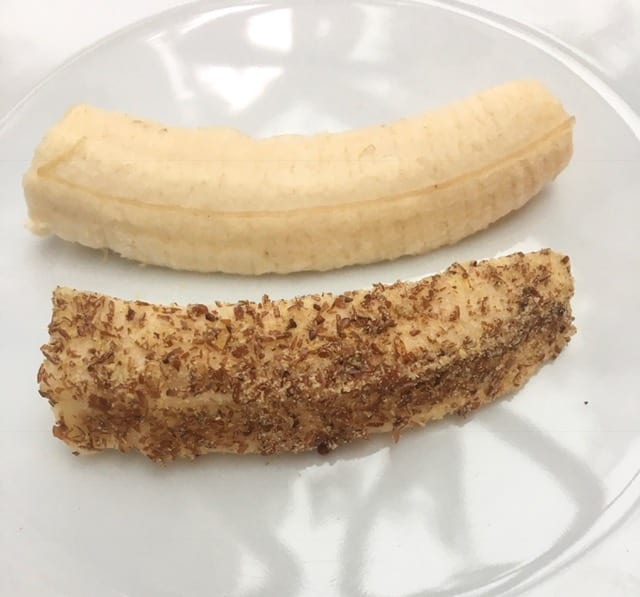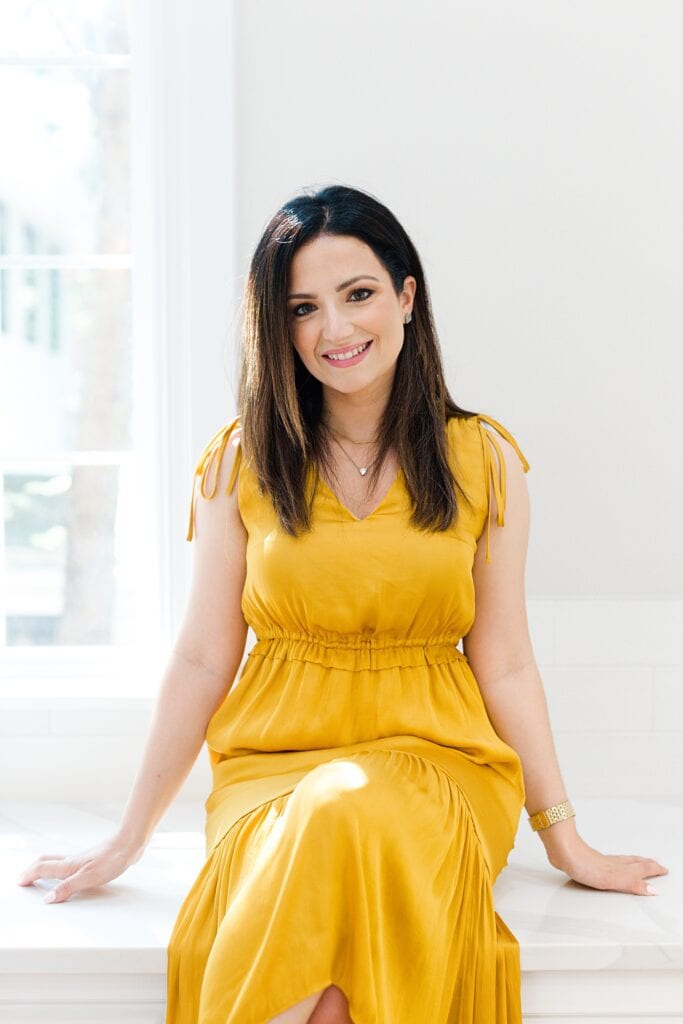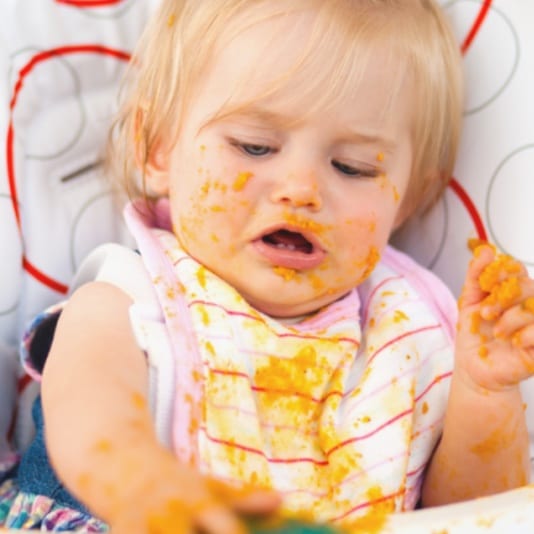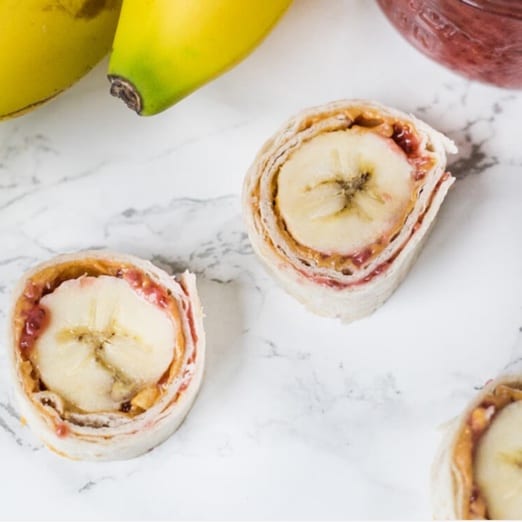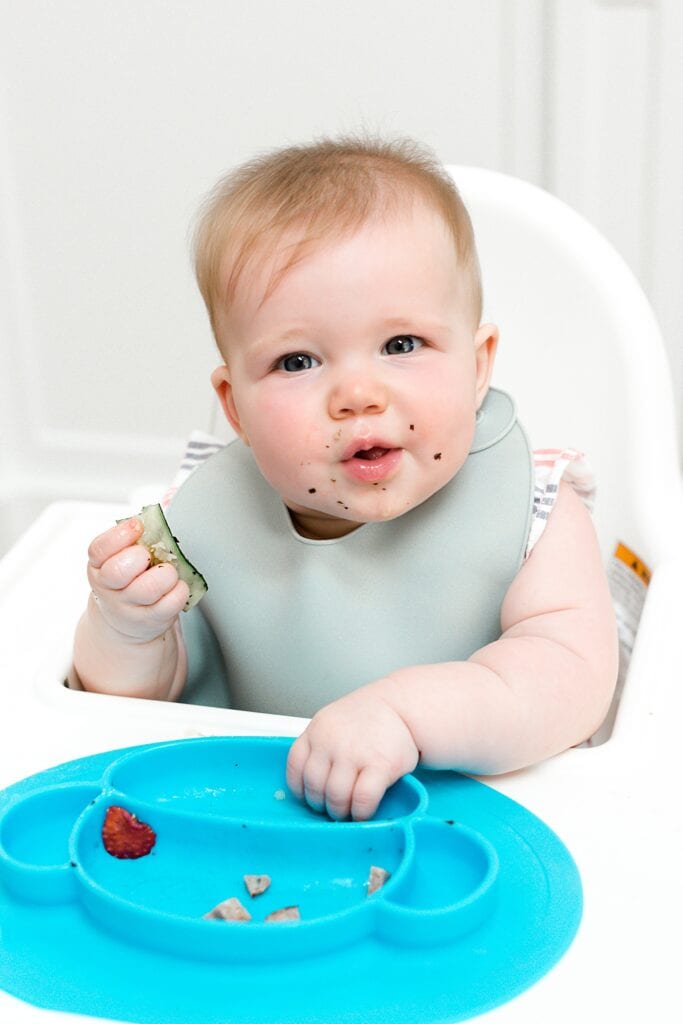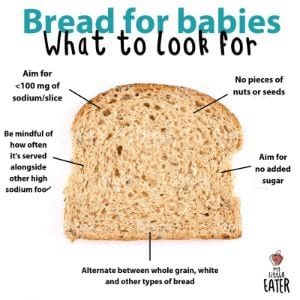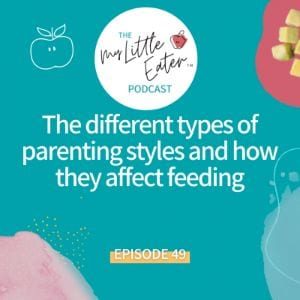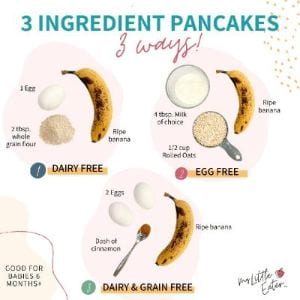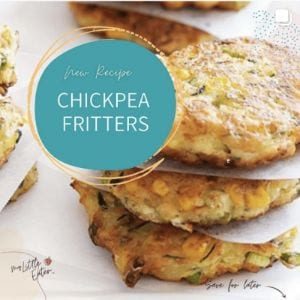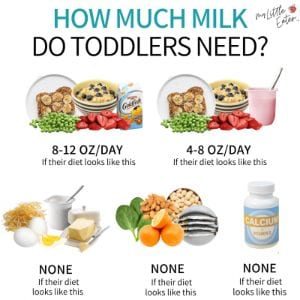It’s very common for first time parents to feel a little overwhelmed by the idea of starting solids, particularly how to start and what to start with. It often seems like you finally get a hang of this milk feeding thing before – BOOM – time to throw another curve ball at you with some solid foods!
Especially if you’re starting with baby led weaning, you want to make sure you get things just right so that it’s easy for your baby to get a hang of it and that it’s safe as well. So let’s lay down the foundations for what food you’ll want to start with.
WHAT’S THE BEST BABY LED WEANING FOODS TO START WITH?
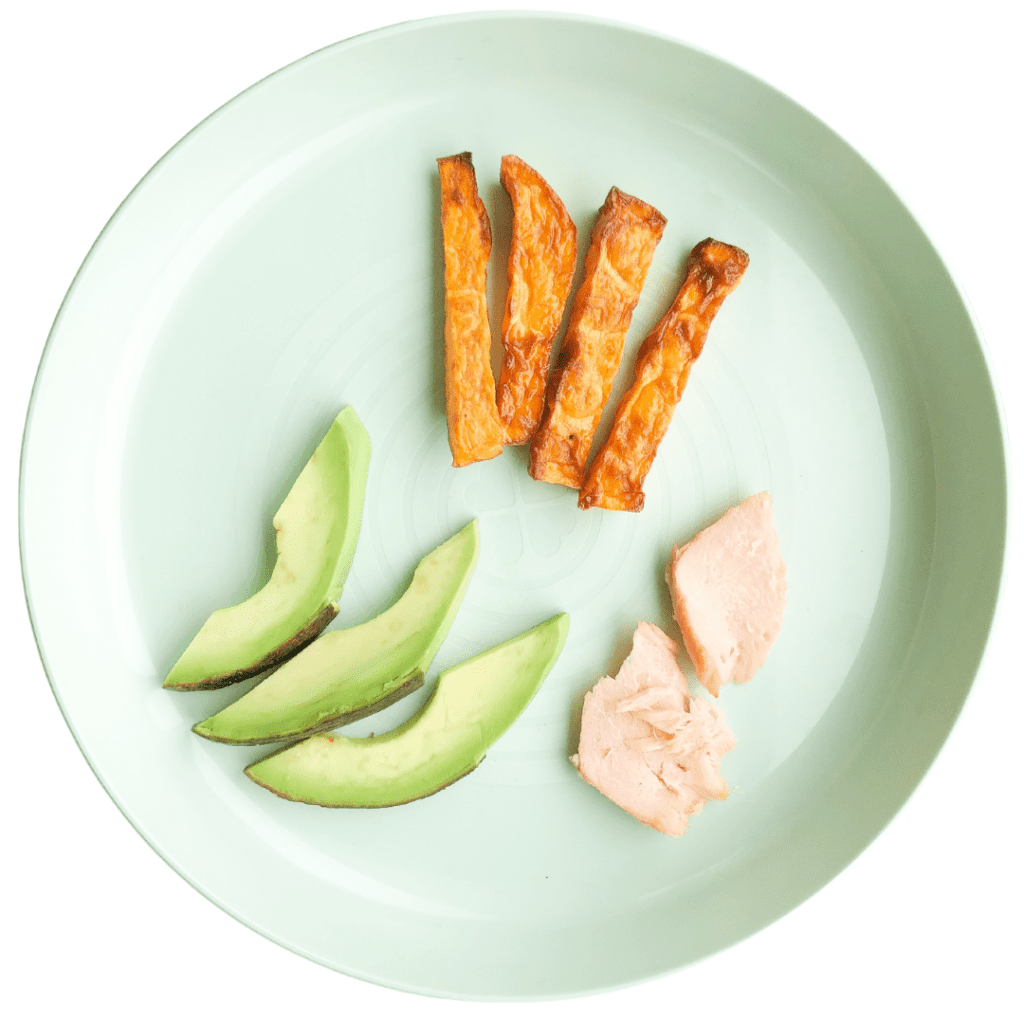
Let’s start with a truth bomb.
Technically speaking, there is no one food that is better to start with than another.
But it’s true!
You don’t have to start with baby cereal like so many people think, you don’t have to start with bland food…heck you don’t even have to start with only one food at a time
(if it’s a non-allergenic food)!
As long as it meets the basic criteria that it’s a safe texture for your baby, and – if you’re doing baby led weaning – it’s easy for your baby to hold…you’re good! So you can introduce food in any order and it can be as simple as taking whatever whole foods you are eating that night for dinner and making simple modifications at the table! There are obviously some nutritional caveats to that modification like avoiding salt and sugar, but honestly…don’t let anyone tell you that you have to start with a certain set of foods or you NEED a meal plan when starting out.
Now, you’re probably thinking that this all just sounds over simplified.
So let me do you a real favour and dish out some tips around what foods I personally would suggest, as a dietitian and feeding expert who’s been in the field over 11 years.
ULTRA SOFT FINGER FOODS TO EASE YOU IN
A lot of parents get worried about jumping right into a mixed food or about starting with a more intimidating texture like meat. It can be scary sometimes with thoughts crossing your mind like “But…my baby has no teeth!”. But teeth are not necessary for starting solids nor starting finger foods. Babies have strong gums and chew with their gums – no teeth required!
Even knowing that though, parents may first want to see what it’s like with extremely soft and thin purees or super soft finger food first. So often, they’ll start on ultra soft ripe fruits and very soft cooked vegetables for a few weeks or even months, until their baby “gets a hang” of eating and the parents themselves are feeling more comfortable. And this can be a great strategy that really helps parents ease into the whole starting solids thing.
However, I don’t want to see parents get stuck on just these textures for much longer than a few weeks, since it prevents baby from learning how to chew, swallow and manage more difficult textures in a timely manner – which can lead to picky eating down the road! Babies can handle varied safe textures right from the beginning and exposing them to lots of different textures is really beneficial and helps to prevent picky eating. In my Baby Led Feeding course I show you how to work your baby up to different textures using my Texture Timeline™, which is basically a guide to moving your baby up in textures, one by one, as they master the previous one – in a timely manner! This is SO important and if you know my work at all, you know I’m a huge proponent of offering a variety of textures early on. So I want to stress that even in the first month of starting solids, we really don’t want to be only offering only super easy puree textures once your baby has shown they can handle them.
FRUITS AND VEGGIES DON’T CUT IT FOLKS!
In addition to wanting to start with extremely soft textures, sometimes parents keep their baby on solely fruit or vegetables for a couple weeks or even month or two because of info they hear or see floating around on the internet that have inaccurate food introduction timelines. These usually state that vegetables have to be introduced before fruit (or vice versa) and that these have to come before starches, protein, etc. But that’s not true again – as mentioned before, there’s no specific order you have to introduce foods in.
PS – it’s a total myth that if you start your baby on fruits before vegetables, they’re going to develop a preference for sweet things. Babies are humans, and humans in general have a preference for glucose aka sweet things. Even breast milk is sweet so it’s not like you’re even avoiding exposing them to sweet flavours anyway. and it doesn’t matter what order you introduce foods, it’s all the same for everyone.
Now of course, fruits and veggies are great for getting certain vitamins and nutrients, and we want to introduce them to our baby frequently, but keep in mind they’re low calorie foods that don’t provide all the nutrients your baby needs. They are not high in iron sources, and have no protein or fat, which are all very important for babies. But the biggest thing we want to focus on from foods that breastmilk doesn’t actually provide enough of by 6 months and on, is iron. Iron is a nutrient that you can only get through food or drink (our bodies don’t synthesize it on it’s own) and breastmilk unfortunately doesn’t have enough iron to meet all the needs of a baby after 6 months of age. Read more about why iron is so important for your baby here.
INCORPORATE HIGH IRON FOODS, DIFFERENT FLAVOURS AND EVEN ALLERGENIC FOODS!
So that’s why a big recommendation I have is to begin incorporating iron rich foods right from the beginning rather than solely fruits and vegetables. That way your baby gets used to it, and begins receiving the benefits of iron right away. And no..this doesn’t mean it HAS to be iron fortified cereal…let’s just bust the myth that this is a food you have to start your baby on as well. It is a great source of iron and it’s an easy texture…but there are lots of other high iron foods you can offer, that also vary in textures that also work just as great. I also recommend introducing different flavours right from the beginning to get them used to the fact that every meal and foods will have different tastes, which infant cereal doesn’t really accomplish. So although it’s a fine option, it’s not mandatory nor should it be the only option.
Finally, in general we want to introduce highly allergenic foods early on, beginning at around 6 months of age, to reduce the risk of developing allergies. There’s no need to rush to introduce every single allergenic food, but introducing one or two a week in the first month is a good practice to keep in mind.
So, with all that being said, I’m going to give you some suggestions for foods that hit the mark for all these different criteria, while keeping it super easy for you as a parent. I’m not huge on fancy and complicated baby recipes and finger foods…just simple whole foods with various spices and herbs does the trick and keeps it easy on you.
Here we go!
BABY LED WEANING STARTER FOODS FOR YOUR 6 MONTH OLD BABY
1. BANANA ROLLED IN (OR MIXED) WITH WHEAT GERM OR GROUND FLAX SEED
Bananas are one of the least intimidating first foods to start with, which makes it a very popular choice amongst parents. It’s sweet, soft and mushy and requires no real preparation! To serve the banana as a finger food, you can just peel it completely and quarter it so you end up with long finger shaped pieces to present to the baby. If you’re pureeing, you can mash the banana up with a fork and if needed, thin it out with a little breastmilk. BUT, what I’m going to suggest is a tiny modification that can take this food from being a low iron source to a good iron source in a jiffy!
Simply coat the banana in either ground flax seed or some wheat germ!

I like to use this ground flax seed by Bob’s Red Mill, but really any will do. It has 6% of an adult’s iron requirements for every 2 tbsp. serving, which makes this about 4% of a baby’s requirements (baby’s need more iron than an adult male!). Using a ground flax seed not only boosts iron, but reduces choking risk and increases nutrient absorption compared to whole flax seeds (we can’t digest them whole). Furthermore, coating them in something like these helps your baby grip the banana easier.
2. AVOCADO (ROLLED IN IRON FORTIFIED INFANT CEREAL)
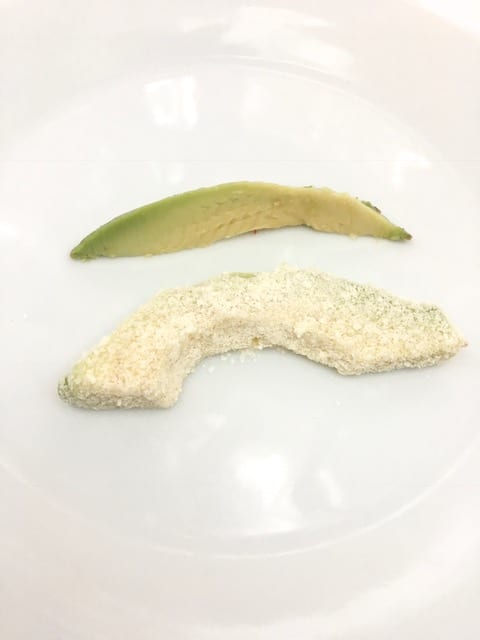
Avocado is another super soft food that most parents feel very comfortable starting baby on. A big benefit of avocado is that it’s high in fat and calories which are both important for your growing baby. You can serve the avocado in quarters without skin on or with the skin partially on for better grip, but once again, the hack here is to coat them in something that will also give it a bit of an iron boost. Here is where an iron fortified infant cereal can work really well in your favour to boost iron and also to provide easier grip.
3. BABY OMELETTE
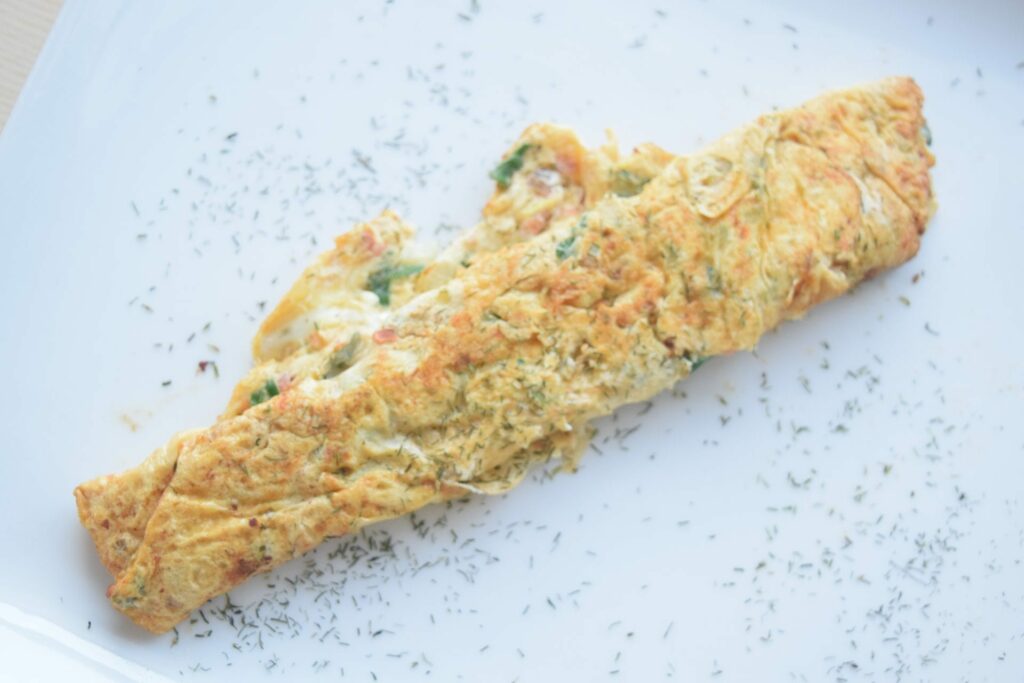
Baby omelettes are one of my favourite BLW foods because they are so versatile and a full meal for you and baby. I specifically say “baby” omelette because traditional omelettes have milk or cream mixed into them for extra “fluff”, and because we only want to introduce only one allergenic food at a time (both eggs and dairy are considered allergenic foods), I would use a baby omelette recipe which involves just whisking egg alone (with some spices if you like) and frying it lightly until cooked through. You can mix in other non-highly allergenic foods like cooked veggies and seasonings. Cut the omelette into strips and serve! *Note: if you’ve already introduced dairy prior to serving this, you can make any old omelette you please!
And again, if you want to puree eggs and leave it so it’s still a bit lumpy for baby to eat, go for it! You can let your baby self-feed with a spoon or you can spoon feed it to them if they haven’t started with finger foods yet.
4. TOFU STRIPS
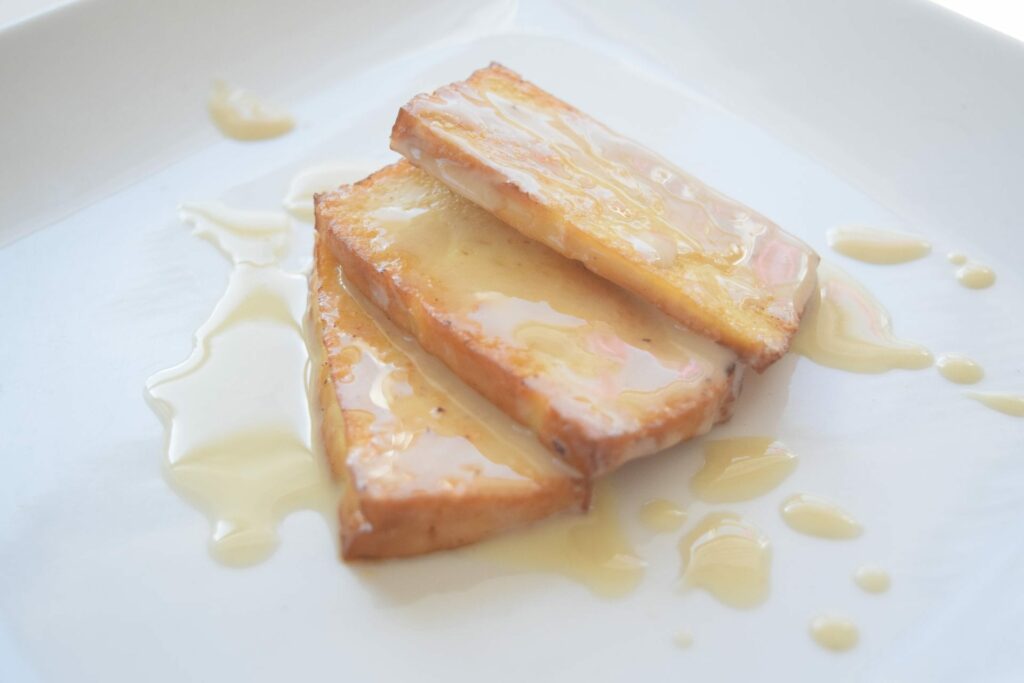
Tofu is a high iron meat alternative made of soy that comes in a variety of textures, ranging soft to firm, and basically absorbs any flavour you cook it with. For babies, I like to choose either medium or firm textures so that it holds its shape when baby picks it up, yet is soft enough to gum on and melt in your baby’s mouth with very light chewing. You can simply cut the tofu into strips and pan fry it on both sides without adding anything to it, however, I think a little flavour makes it more exciting for your baby! Because it’s a source of non-heme iron (see my blog post on iron for more info), you may want to boost the absorption of iron by adding a vitamin C source – so perhaps a spritz of lemon or lime juice, or cook the tofu in a tomato based sauce and serve. You can also add a drizzle of tahini (sesame paste) as is shown in the photo above, but note that both sesame and the soy in tofu are considered highly allergenic foods and so you wouldn’t want to introduce the two of them together for the first couple of times.
5. SALMON PIECES / STRIPS
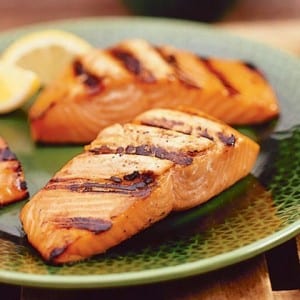
Salmon is a perfect first food for baby because it’s very high in iron and healthy fat (specifically DHA – a brain boosting fat!). PLUS it’s soft, flaky and tender! You can serve the salmon in strips or in large pieces broken off of a full piece of cooked salmon for your baby to hold. If your baby continually squishes the salmon in their fist or has a hard time picking it up, you could always throw it into a food processor or blender with a bit of cooked potato, quinoa or rice, form it into patties and cook on a pan. This should firm it up nicely while keeping the soft, easy texture. Salmon patties or balls are also a wonderful way to make it easier to hold and make a great meal for the whole family.
6. BEANS (ON LIGHTLY TOASTED PIECES OF BREAD)
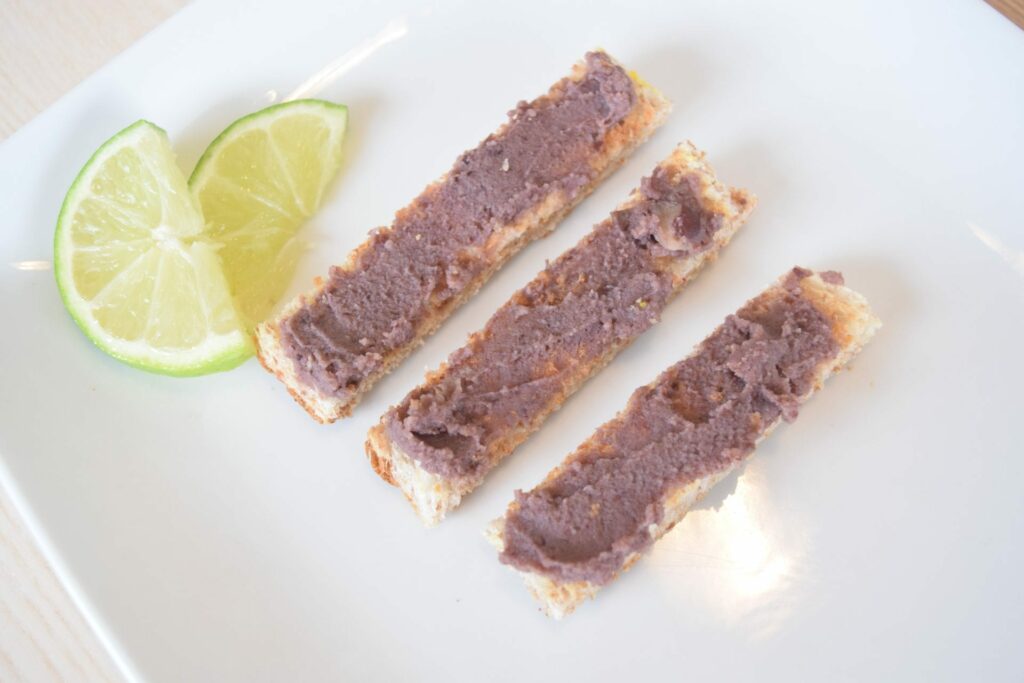
Another very easy first finger food for your baby is some lightly toasted strips of bread topped with mashed/pureed beans. The toast is a perfect vehicle for so many high iron toppings, and since individual cooked beans on their own are hard for your baby to pick up until they’ve developed pincer grasp, this is a great way to get beans in earlier on. The iron source in this food comes from the beans themselves, but you can also puree or mash other high iron pulses like lentils to switch things up. You can once again, boost the iron absorption with a little squeeze of lemon or lime juice on top or mixed into the bean mixture. Note: the wheat in bread is considered to be an allergenic food but the beans are not, so go ahead and serve these two together right from the beginning, as you’ll be able to attribute any possible reaction to the wheat itself ?
7. SLOW COOKED MEAT

Meat is a wonderful first food to offer! It has the most absorbable form of iron and it can be cooked in such a way that it’s soft and easy for your baby to manage. I have a blog post all about the different ways to serve meat, it’s a goodie if you’re interested, so you can check that out here. But my favourite and one of softest way to offer meat is to slow cook it. Honestly, the other day I slow cooked a whole chicken and the breast meat just disintegrated in my hand when I applied a bit of pressure in between my thumb and forefinger. And the thighs and legs are actually even more tender and soft. Slow cooked pork or beef work as well. Again, check out the blog post for lots and lots more info on this.
8. ROASTED VEGGIES

I’ll leave you with the last of my food suggestions for starting out and that is…a veggie. Cause I just know you’ll all be like…”C’mon Edwena…veggies are what we want our babies to love!!”
And that, my friends, is true.
So here’s my suggestion. I’m going to suggest any veggie really, cause again, there’s no right or wrong here, but just to get the ideas flowing and not always resort to sweet potato…try a roasted carrot or zucchini! Whether in a stick form or, even easier as a mashed, more puree form since it will be mushy! Just something a little different as a first flavour and let your baby get accustomed to it! Again, I’m going to add something extra in for some fat, so I suggest you coat it liberally in olive oil so it’s got lots of good healthy fats on there. Add some garlic or onion for a little flavour exposure and have fun with some variety!
So, there you have it! My suggestions for some great first foods to start with when starting out! Serve one of these foods per day if you like and see how comfortable you and your baby are – then, move onto some more challenging textures and get creative!
If you want to get more ideas for foods for starting solids, listen to my podcast episode on this here!
And if you’re looking for a step-by-step walkthrough of how to introduce purees and finger foods to your baby in a fun, stress free way, you’ve got to check out my Baby Led Feeding online course. It’s helped thousands of parents feel confident and excited to feed their babies and raise a food loving baby.
